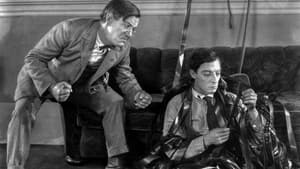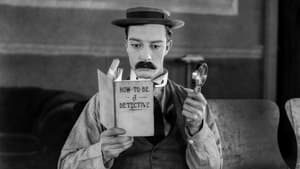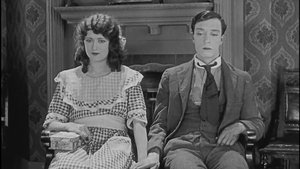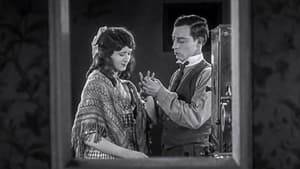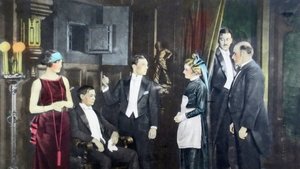Contact: info@alwanfilm.com
Video Sources 0 Views
- Watch trailer
- Sherlock Jr.


Synopsis
Table of Contents
ToggleReview: Sherlock Jr 1924 Colorized – A Masterpiece of Silent Cinema Rediscovered in Living Color

Introduction
“Sherlock Jr.” (1924) stands as a testament to the brilliance of silent cinema and the creative genius of its director and star, Buster Keaton. In this article, we’ll delve into the significance of this early colored film, exploring its impact on audiences and its lasting legacy in the realm of comedy.
Check The Full Colorized Movies List
Check Our Colorized Movies Trailer Channel
Understanding Sherlock Jr 1924 Colorized: Director, Cast, and Genre
Directed by the legendary Buster Keaton himself, “Sherlock Jr.” (1924) showcases his unparalleled talent for physical comedy and innovative filmmaking techniques. The film features a stellar cast, including Buster Keaton in the title role, along with Kathryn McGuire and Joe Keaton. Blending elements of slapstick comedy, romance, and adventure, “Sherlock Jr.” (1924) transports viewers to a world of laughter and thrills, where anything is possible with a little imagination.
Exploring the World of Sherlock Jr 1924 Colorized: Plot and Characters
At its heart, “Sherlock Jr.” (1924) follows the misadventures of a hapless projectionist, played by Buster Keaton, who dreams of becoming a detective like his cinematic hero, Sherlock Holmes. When he’s framed for a crime he didn’t commit, our intrepid hero must use his wits and ingenuity to clear his name and win the heart of his beloved. Along the way, he encounters a host of eccentric characters and navigates a series of hilarious obstacles, all while grappling with the blurred lines between reality and fantasy.
The Art of Film Colorization
Film colorization serves as a transformative tool that breathes new life into classic movies, allowing audiences to experience familiar stories in vibrant color. By digitally enhancing black and white films with color, colorization offers viewers a fresh perspective on timeless tales, revealing hidden nuances and details that may have been overlooked in the original format.
Early Colored Films: A Brief History
The history of colored films stretches back to the early days of cinema, with filmmakers experimenting with various techniques to add color to their creations. From hand-tinted frames to early Technicolor processes, the evolution of colored film has been marked by innovation and experimentation, paving the way for the development of modern colorization techniques that continue to captivate audiences to this day.
Sherlock Jr. 1924 and Its Early Colored Version
The decision to release “Sherlock Jr.” (1924) in a colorized format was met with both excitement and skepticism. While purists argued that the film’s original black and white aesthetic should be preserved, others welcomed the opportunity to experience the story in vivid color. Ultimately, the early colored version of “Sherlock Jr.” (1924) offers viewers a fresh perspective on Buster Keaton’s comedic masterpiece, enhancing its visual appeal and introducing it to a new generation of audiences.
The Debate Over Film Colorization
The debate over film colorization has raged for decades, with proponents praising its ability to revitalize classic movies and introduce them to new audiences, while detractors argue that it compromises the artistic integrity of the original work. As technology continues to advance, filmmakers and audiences alike are left to grapple with the implications of colorization on the preservation and interpretation of cinematic classics.
Examining Sherlock Jr. 1924 as an Early Colored Film
As with any colorized classic, the impact of colorization on “Sherlock Jr.” (1924) is a matter of personal interpretation. Some may argue that it enhances the film’s visual appeal and immerses viewers in its world, while others may feel that it detracts from the stark beauty of the original black and white version. Regardless of one’s stance on the issue, there’s no denying the enduring power of “Sherlock Jr.” (1924) as a timeless comedy classic that continues to delight audiences of all ages.
Influence and Legacy: Sherlock Jr 1924 Colorized’s Impact on Cinema
“Sherlock Jr.” (1924) has left an indelible mark on the world of cinema, inspiring countless filmmakers and captivating audiences with its innovative storytelling and timeless humor. From its groundbreaking special effects to its iconic chase sequences, the film continues to resonate with viewers of all ages, reaffirming its status as a true masterpiece of silent cinema.
Director’s Cinematic Legacy: Beyond Sherlock Jr 1924 Colorized
Buster Keaton’s influence extends far beyond “Sherlock Jr.” (1924), with a diverse body of work that continues to inspire and entertain audiences around the world. From “The General” to “Steamboat Bill, Jr.,” Keaton’s films are celebrated for their wit, charm, and technical brilliance, solidifying his legacy as one of the greatest comedians and filmmakers of the silent era.
Themes Explored in Sherlock Jr 1924 Colorized
“Sherlock Jr.” (1924) explores a myriad of themes, from the power of imagination to the triumph of the underdog. Through its inventive storytelling and timeless humor, the film invites viewers to embrace their inner detective and embark on a journey of discovery and adventure. As audiences immerse themselves in the world of “Sherlock Jr.” (1924), they are reminded of the boundless possibilities of the human imagination and the enduring appeal of laughter in the face of adversity.
Reception and Controversy Surrounding Sherlock Jr 1924 Colorized
Upon its release, “Sherlock Jr.” (1924) received widespread critical acclaim, with many praising Buster Keaton’s innovative filmmaking and comedic genius. However, the decision to release the film in a colorized format sparked debate among purists, reigniting the age-old discussion surrounding film preservation and artistic integrity. Despite the controversy, “Sherlock Jr.” (1924) remains a beloved classic that continues to delight audiences with its timeless humor and inventive storytelling.
Where to Watch Sherlock Jr 1924 Colorized Online
For those eager to experience the magic of “Sherlock Jr.” (1924), the film is readily available on popular streaming platforms such as Netflix, Amazon Prime, and Hulu. Whether you choose to watch it in its original black and white format or the early colored version, “Sherlock Jr.” (1924) promises to transport you to a world of laughter and adventure, where anything is possible with a little imagination.
FAQs About Sherlock Jr 1924 Colorized
Q: Is “Sherlock Jr.” (1924) based on a true story? A: No, “Sherlock Jr.” (1924) is a fictional comedy crafted by Buster Keaton, who drew inspiration from his own experiences and observations of human nature.
Q: Who are the main actors in “Sherlock Jr.” (1924)? A: “Sherlock Jr.” (1924) stars Buster Keaton in the title role, along with Kathryn McGuire and Joe Keaton in supporting roles.
Q: What awards did “Sherlock Jr.” (1924) win? A: While “Sherlock Jr.” (1924) did not win any major awards, it received critical acclaim for its groundbreaking special effects and innovative storytelling.
Q: Why was “Sherlock Jr.” (1924) released in a colorized format? A: The decision to release “Sherlock Jr.” (1924) in color was made to introduce the film to a new generation of viewers and enhance its visual appeal for modern audiences. While the choice to colorize the film sparked debate among purists, it ultimately allowed “Sherlock Jr.” (1924) to reach a wider audience and ensure its continued relevance in the annals of cinematic history.
Conclusion
“Sherlock Jr.” (1924) remains a timeless masterpiece of silent cinema, captivating audiences with its innovative storytelling and timeless humor. Whether viewed in its original black and white format or the early colored version, the film continues to delight audiences of all ages, reaffirming its status as a true classic that stands the test of time.
